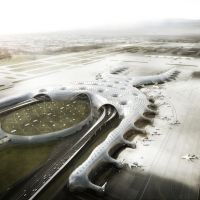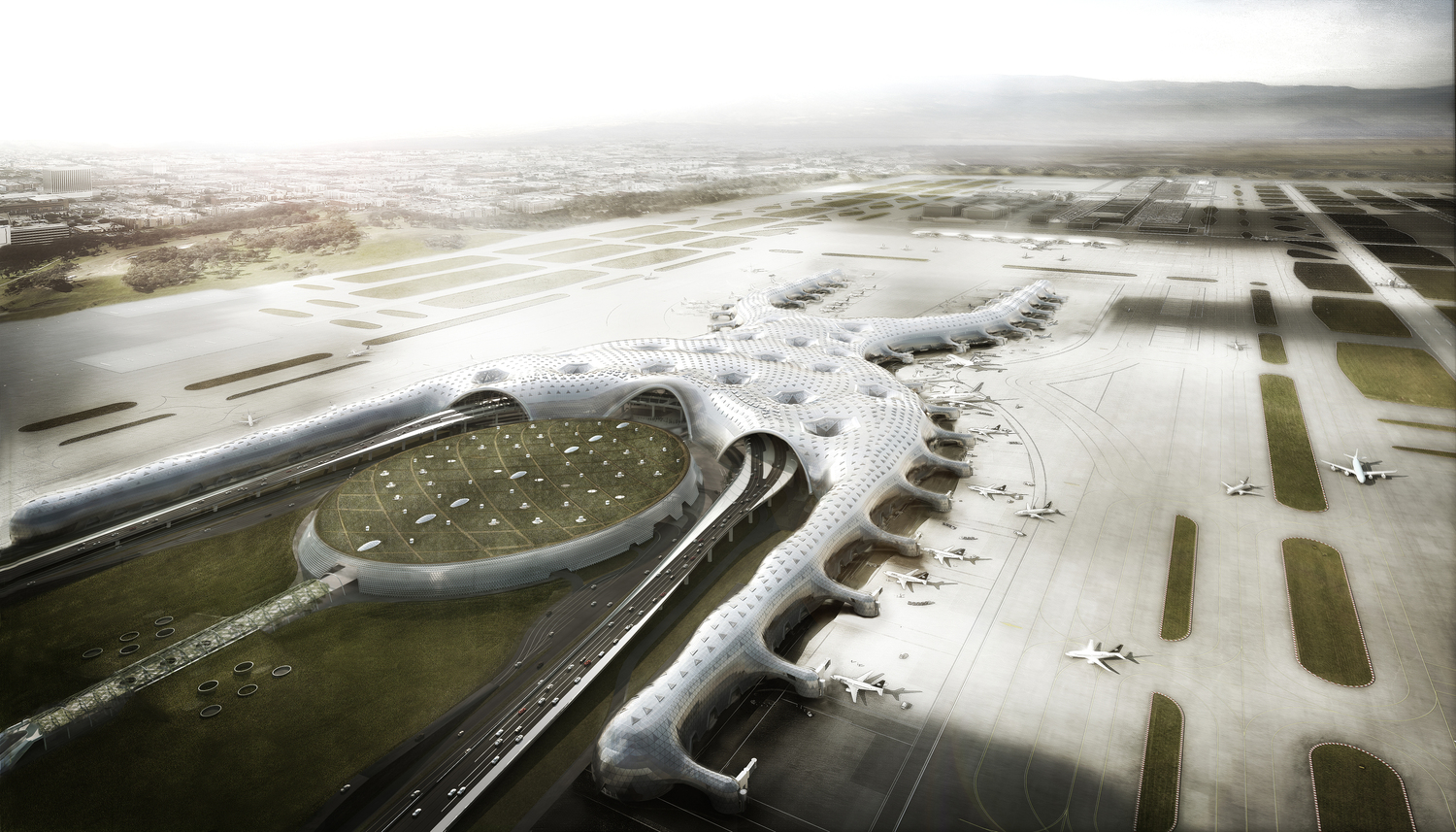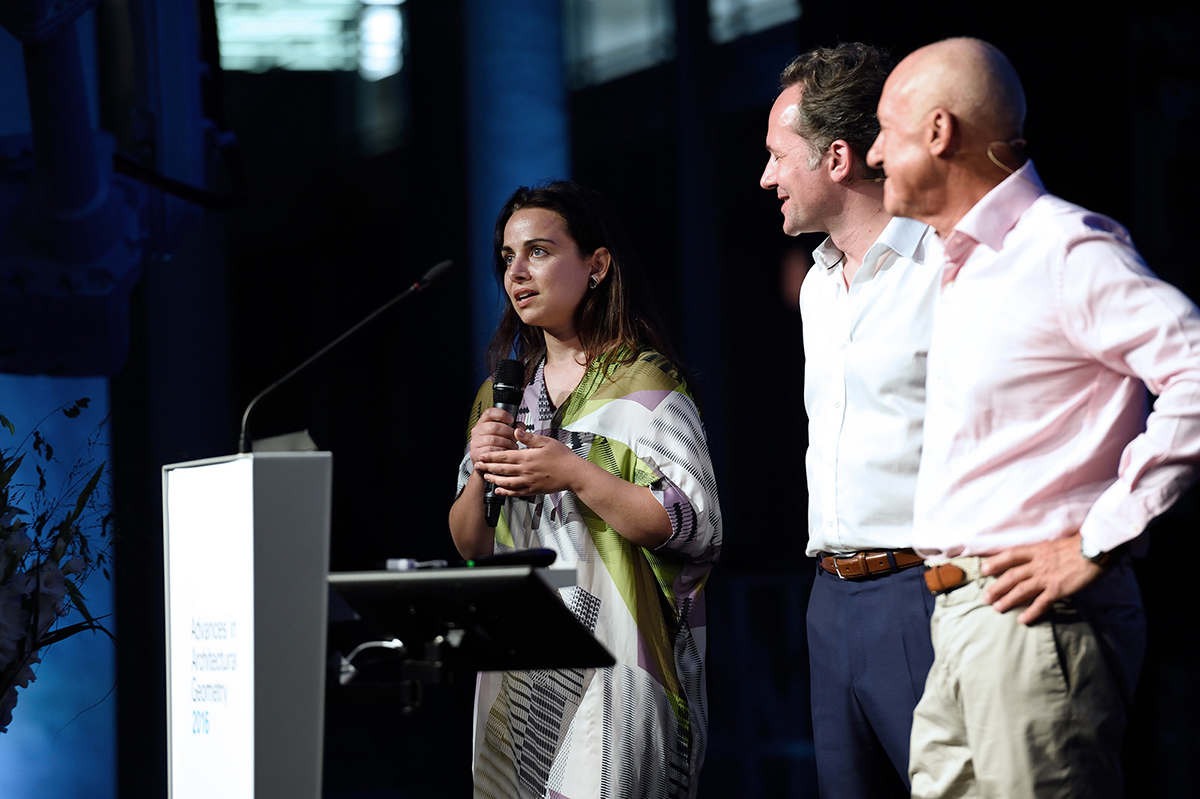Tag: computation
-
 “Always question your own preconceptions”: Discussing the future of technology in architecture with Martha Tsigkari of Foster + Partners2018-02-15, Author: Demi Fang
“Always question your own preconceptions”: Discussing the future of technology in architecture with Martha Tsigkari of Foster + Partners2018-02-15, Author: Demi FangAmidst the excitement of ACADIA 2017 on MIT’s campus, we found an opportunity to sit down and chat with Martha Tsigkari, who presented the New International Airport Mexico City (2020) with her colleagues. Tsigkari trained as an architect-engineer in Greece before obtaining a master’s degree at The Bartlett’s Architectural Computation programme at UCL, which she describes as “a computer science course for designers and architects.” She has been at the Applied Research + Development (AR+D) group at Foster + Partners’ London office ever since. In this post, we synthesize some of her thoughts on the future of technology in architecture, on the art of collaborating across disciplines, and on the humility necessary for innovation. Quotes have been edited for clarity.
The main focus of Tsigkari’s role and presentation of Foster + Partners’ highly anticipated New International Airport Mexico City was “evidence in performance-driven design. It’s all about how all the analysis and optimization can be incorporated through the life of the model to make for a better solution,” Tsigkari says.
On working with Arup, the engineers on the airport project, Tsigkari says that “it was a fantastic collaboration. The design process was not conventional in that we knew how we wanted the space frame to look aesthetically, so we developed all the processes necessary to create a structurally viable and well-performing space frame. Arup was confident in the processes we had and fully adapted our topology. They would receive our permutations of the final model, analyze them, and return with the sizes of the nodes and elements required. From that feedback we would make some aesthetic decisions; if we saw some really big nodes, for example, we knew that we had to do something with the topology and the smoothing of the space frame at that location.”
 New International Airport Mexico City. Copyright Foster + Partners
New International Airport Mexico City. Copyright Foster + PartnersAside from performance-based design, the AR+D group at Foster + Partners focuses on multi-faceted and cutting-edge topics. “We see a huge future within architecture in Virtual Reality (VR),” Tsigkari says. “We also do a lot with simulations and optimization; we have written our own simulation engines that run tens or hundreds of times faster than those in the industry. I worked a lot with interoperability - making sure that this simulation works with all the different platforms that we’re using and that they talk with each other. We’re using those tools through optimization processes, whether it’s cognitive computing or genetic algorithms.
“We are also quite heavily involved with innovative interfaces to help designers understand the repercussions of their decisions very early on in the design process,” says Tsigkari. “We’re doing a lot of things with innovative materials and design-to-fabrication processes as well as looking into interesting things like the Internet of Things, seeing how we can make smarter buildings and cities that not only get constant feedback from the experiences that people have, but also better themselves without human input.
Tsigkari emphasizes the significance of nonlinear analyses and adaptive processes in future steps to improve the built environment. “There is a fundamental problem in the way we design most of our buildings: typically, it is a linear analysis for a specific pseudo-optimal state. For example, we design buildings based on the worst-case scenario of an earthquake. The resulting design is going to be useless for 90% of the time - it is only useful for the one-off chance that an earthquake happens. On the other hand, if you see how nature works, and if you embrace the idea of compliant mechanisms and nonlinear analysis, then you start embracing the ideas of embodied computation that Axel Kilian was explores in his tower, where you don’t optimize based on worst-case scenarios but instead try to design a form intelligent enough to optimize itself based on the feedback it gets and based on a specific state it always needs to return to. For me, this idea is extremely crucial. It feels like a natural next step in how we build.”
Tsigkari goes on to describe an ongoing research collaboration with Autodesk’s Panos Michalatos, Matt Jezyk and Amira Abdel-Rahmani: “We are essentially running nonlinear analyses for compliant mechanisms on the material level. More specifically, we are working with thermally actuated laminates. You can see situations where a facade is no longer a static element, but is externally actuated and adapts.
“A big part of our research right now is to understand the laminate layering required for the desired adaptations. My colleague Marcin Kosicki has been working with TensorFlow to develop a neural network, feeding in different laminates and the associated disfiguration of the material.”
Tsigkari maintains a humble, if not borderline cynical, perspective on the state of technology in architecture today. “Architecture as a profession is, I daresay, backward-looking. The industry is we are very slow to adapt to new technologies. It’s interesting to see that in the past decade, there has been a significant shift towards more computational design processes. I think what made the shift is the development of tools - for example, Grasshopper for Rhino - which made visual scripting quite intuitive. It introduced a different interface for users towards computer-science-based processes.”
How does Tsigkari train students towards such a rapidly evolving field? “What I learned at The Bartlett was not a particular software but computer science and algorithms: how to write a vanilla AI algorithm and how to potentially apply this to design problems. The trick is to get the underlying knowledge of what these processes are and how they could be used. You can use that knowledge in whatever software you want as long as you know what it is, how it works, and what you can expect from it.
“If what we see in Grasshopper is the skin of computational design, what we’re teaching is the bones and muscles of it; the underlying principles of computation. We are teaching algorithms that are not new - other fields have been using these for the past 60 years. In architecture we have started using them in the past decade. The reality is that we’re 60 years behind industries like rocket science, the chemical industries, or the army. It’s interesting to see how people feel extremely proud of using tools that have been around for over half a century and have been successfully used in many other industries with quite innovative outcomes.”
The interdisciplinary nature of the AR+D team helps. “We have people who have architectural backgrounds or engineering backgrounds, or both, but we also have artists, computer scientists, aeronautical engineers... I think that looking at what is achieved in other industries is absolutely key to being able to innovate within our own industry in terms of building processes, materials, and even techniques. Only now are we starting to look at how swarm robotics can affect buildings; techniques like these have been used extensively in other industries in the past with fantastic results. This kind of cross-referencing that can be beneficial for our industry.”
 Martha Tsigkari with Francis Aish and Norman Foster at the keynote of Architectural Advances in Geometry Symposium 2016. Image courtesy of AAG 2016
Martha Tsigkari with Francis Aish and Norman Foster at the keynote of Architectural Advances in Geometry Symposium 2016. Image courtesy of AAG 2016It is by chance that Tsigkari occupies an unusual career path at the intersection of practice and academia. “My involvement with teaching is really driven by my late mentor, Alasdair Turner. He initiated the master’s programme I’m teaching at now, and he was this fantastic personality - a computer scientist, who had a lot of interest in tying computer science, architecture, and philosophy together.
“Alasdair took me from a world where I was unsure where I wanted to be and led me down a rabbit-hole to a completely different world of possibilities. After his untimely death, I kind of took over his lectures on genetic programming. For me, teaching is about extending his legacy to the newer generations, helping people the same way I was helped, to understand the art of the possible. So that’s how I ended up in academia.
“I actually find it extremely hard to be both in academia and in industry because they’re both very time-consuming. You need to be very strict with your time,” says Tsigkari. “Having said that, it gives fantastic opportunities to educate newer generations with notions you have in industry. I do not simply show my students an algorithm, but I can also show them its potential by showing them the projects I’ve used it on. It gives people a direct connection between the algorithm (which is quite abstract) and what can be done with it (which is quite tangible). I find that this connection is really interesting, and it’s very interesting for the students as well. I’ve always gotten very positive feedback about having that understanding.
Asked to give advice to students aspiring to be architects or engineers, Tsigkari pauses and admits, “This is a very difficult question. I’m horrible at giving advice; I feel that people should be their own advisers and they should do what feels right for them.”
Despite these comments, Tsigkari gradually offers some striking pieces of advice as she continues. “I think you should always do what feels right for you, and that you should always question everything. I would say you should also always question your own preconceptions of what things are. So if you are on the verge between architecture and engineering, question what these two mean for you. Your preconceptions are going to lead you down one road that may not be what you think it was. Step back; don’t make big plans. Feel your way through things that you’re interested in, and something will always come up.”
Citing her own experience, Tsigkari recalls that “as with everything in my life, I had no plans. I never saw myself in a certain position, ever. Other people had plans for me, which I had never followed. I went to a very traditional school, and I learned a lot, but they were not things I wanted to to do for the rest of my life. I mutated, diversified, and changed myself in order to pursue what I wanted.”
Tsigkari continues, “If I were to advise something, it would be to not tag yourself. Do not call yourself an architect or an engineer or a computer scientist - nowadays, I think the da Vincian perception of a person is what is closer to what we need in order to innovate. It is important to understand various disciplines while always saying to yourself that you know very, very little. That will always drive you to become better. It will take the danger out of what you do and will make a better person out of you.
“I look back at my university years with a sense of newfound introspection. Had I known then what I know now, I would never have chosen architecture - never. I would possibly go into artificial intelligence, robotics, or neuroscience, and do something completely different, because I see even now that these are the things that are interesting to me.”
Reflecting briefly on the direction in which she hopes to steer her future, Tsigkari continues, “I guess that I am trying to shift my path towards those topics that I am interested in. It becomes more difficult as time goes by and you get more responsibility at work, but, you know... I don’t think it’s ever too late.”


